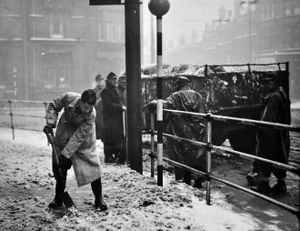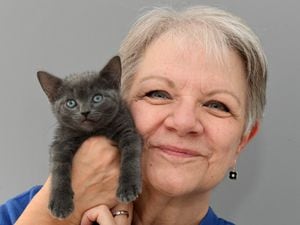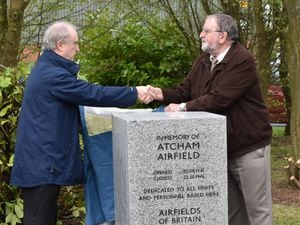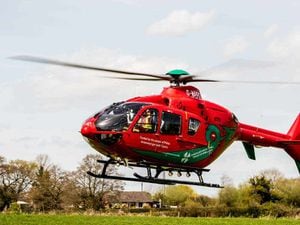What did the Germans ever do for us? Former enemies who did their bit
Building in Bushbury, Wagner in Worfield, and cricket in Claverley – just some of the things the Germans did for us.
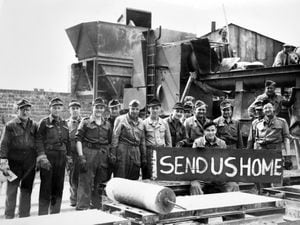
German prisoners of war, that is.
Not that things were all sweetness and light. When a Star photographer was taking pictures of German POWs at the British Steel Construction Co at Wednesbury they held up a big board with a stark message: SEND US HOME. The managing director rushed over and told them to put it away.
In the post-war period huge numbers of German prisoners were kept in camps across the Midlands, and some never did get to go home as they chose to remain or, in a few tragic cases, it all became too much and they committed suicide.
German towns and cities were devastated, so there might not be a home to go to, or their homes might fall in the Soviet zone and returning there was a less pleasant prospect.
As that Wednesbury protest demonstrated, the vast majority did want to return, but typically they faced a long wait. The last German POWs were repatriated in November 1948, well over three years after the European war had ended.
It meant that while held in Britain they had a lot of time to fill with a combination of work, as they were tapped in to as a source of ready labour, particularly on farms and leisure activities.
And we've delved into our archives to turn up some remarkable and historic pictures which give a taste of some of the things the German prisoners got up to in our area.

At first fraternisation between prisoners and the local population was strictly forbidden, but the ban was later lifted and, as restrictions were relaxed and tensions eased, they became part of their local communities.
The lifting of the ban came just in time for Christmas in 1946. On Christmas morning, bringing with them toys they had made for distribution among poor children in Cannock, over 200 German Catholics from the POW camp at Penkridge attended a celebration of mass by Father B Hickson at St Mary's Roman Catholic Church, Cannock. Before returning to Penkridge they were served with tea and cigarettes in St Mary's Parish Room.
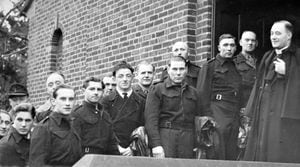
In Worfield the prison camp was in the grounds of Davenport House, and among those there was Horst Laemmerhirt, who had been at the State Opera House in Meiningen, Germany.
The prisoners formed an orchestra, conducted by Laemmerhirt, and one of our photos shows them playing a concert for Worfield villagers in August 1947. We don't actually know the repertoire (Wagner was a guess).
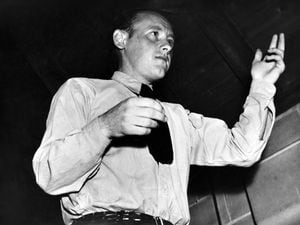
The prisoners were already a familiar sight to villagers, as every Sunday morning they had their own church service at St Peter's Church. They would walk from their camp accompanied by two British soldiers, who were there to ensure that they did not fraternise with the ordinary Worfield folk.
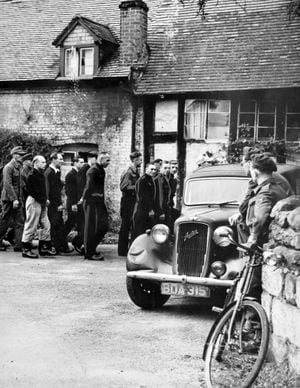
The Germans had their own minister for the service, Pastor Peter Heinemann, from Frankfurt, and the organist was Schaller Walter, who had been a dance band pianist in Weimar.
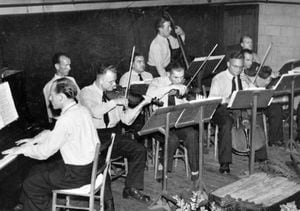
If you live in Bushbury, it's possible that you are on a housing estate initiated soon after VE Day in which German captive labour had a hand.
We refer to a picture and report in the Express and Star of Monday, June 25, 1945, which began: "Twenty sun-tanned German prisoners of war, equipped with shovels, picks, axes and saws, arrived on Wolverhampton's Bushbury housing site this morning and started work on preparing roads and sewers.
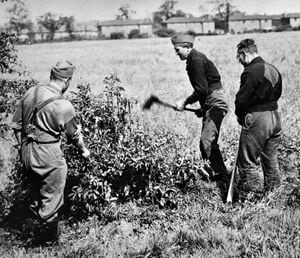
"The whole of this site, which eventually will hold 1,500 houses, shops, school, &c., is to be developed, but at the moment the Germans are working on the land allocated for 160 temporary bungalows.
"Although the Ministry of Health has approved of the complete layout of this scheme, it is not yet known whether they will be prepared for the Germans to carry out the whole work of roads and sewers..."
The "Send us home" protest at the British Steel plant at Wednesbury was featured on the front page of the Express & Star of July 24, 1946, although for some reason the published caption did not give the exact location, instead saying it had happened at a West Midlands works.
There was less sensitivity about the Germans' contribution to cricket at Claverley, in which they were instrumental in the creation of a new village cricket pitch, and would work on the wicket in their spare time.
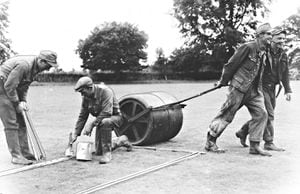
This time we can refer to an Express & Star article and picture published on July 12, 1947, the day of the official opening ceremony for the new pitch.
The story began: "A year ago a piece of land in Sandford Park, Claverley, was a ploughed field. Today it is Claverley Cricket Club's new ground.
"The transformation has been made as a result of a great deal of hard work, in which German prisoners of war, employed on local farms, have played a leading part. In the evenings and during weekends these Germans, to whom the game of cricket is unknown, have given many hours to preparing the ground, rolling, cutting and weeding.
"One weekend they dismantled the pavilion on the club's old ground and re-erected it on the new one...
"Today the official opening ceremony was performed during the match with Penn."
